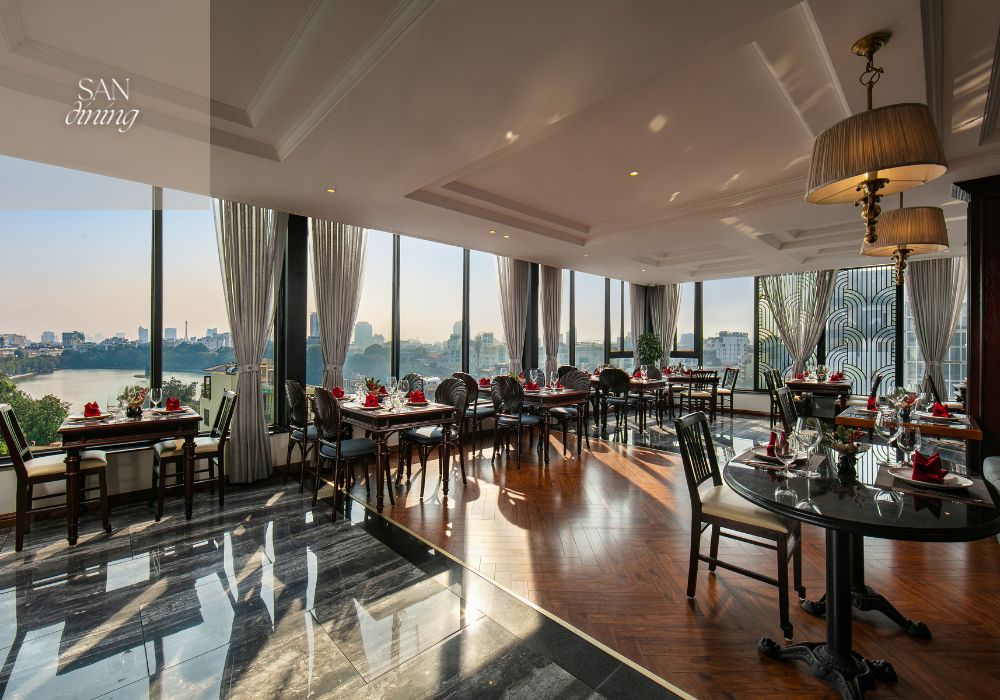Asian Fusion Restaurant: A Special Dining Experience in the Heart of Islamabad
Asian Fusion Restaurant: A Special Dining Experience in the Heart of Islamabad
Blog Article
Savor Authentic Oriental Food With a Pan-Asian Spin for a Culinary Adventure
Starting a culinary journey with authentic Oriental food, improved with a Pan-Asian twist, uses an one-of-a-kind possibility to explore the rich tapestry of flavors that define the region's varied cooking practices. This experience invites you to savor the beautiful balance of preferences-- sweet, salted, spicy, and sour-- harmonized by aromatic herbs and spices. Think of the innovative fusion of Thai curry and ramen or the unanticipated joy of sushi burritos. As you consider these enticing dishes, take into consideration the social stories and historical impacts that form them, each bite supplying a tale waiting to be uncovered.

Discovering Pan-Asian Tastes
In the realm of global gastronomy, Pan-Asian cuisine stands apart for its impressive variety and the unified interaction of flavors from various Eastern cultures. This cooking method commemorates the rich practices and special ingredients found across the continent, creating a tapestry of preferences that is both rewarding and interesting. Secret to Pan-Asian cuisine is its capability to stabilize contrasting tastes-- pleasant, salty, spicy, and sour-- while highlighting the quality and high quality of each active ingredient.
From the umami-rich soy sauce of Japan to the fiery chili peppers of Thailand, Pan-Asian food supplies a substantial palette of flavors. These components are commonly combined in creative means, improving recipes with layers of intricacy. For example, the usage of fragrant herbs such as lemongrass and cilantro, typical in Vietnamese and Thai cuisine, includes a revitalizing brightness to dishes, while the consolidation of coconut milk provides a luscious, abundant texture.
The emphasis on fresh produce and fragrant flavors ensures that each dish is not just a banquet for the palate yet additionally for the senses. Pan-Asian cuisine invites restaurants to start a culinary journey, exploring the large and varied landscapes of Oriental gastronomy with every bite.
Combination Recipes to Attempt
While Pan-Asian food is celebrated for its standard tastes, the modern-day cooking landscape is significantly welcoming blend recipes that mix these timeless components with impacts from various other areas. This cutting-edge approach not just honors the abundant heritage of Oriental cookeries however additionally presents unique preference experiences that interest contemporary tastes buds.
An archetype of such a combination recipe is the Korean-Mexican taco, where marinated bulgogi beef is wrapped in a cozy tortilla, topped with kimchi and a zesty gochujang-infused salsa. This mix marries the bold, tasty flavors of Korea with the vibrant, fresh aspects of Mexican food. Similarly, sushi burritos have actually obtained popularity, integrating the fragile virtuosity of Japanese sushi with the passionate, hand-held comfort of a burrito, frequently featuring fusion active ingredients like tempura shrimp and avocado with a drizzle of wasabi mayo.
An additional significant dish is Thai curry ramen, which instills the creamy, fragrant spices of Thai curry into the comforting broth of standard Japanese ramen, developing a harmonious blend that tantalizes the senses. These combination recipes expand past mere novelty; they represent a cooking discussion in between cultures, encouraging expedition and innovation on the planet of Pan-Asian cuisine.
Crucial Ingredients and Seasonings
To truly appreciate Pan-Asian food, one must comprehend the essential active ingredients and spices that create its structure. This diverse culinary style draws from an abundant tapestry of Oriental traditions, utilizing a harmonious mix of structures and tastes. Key ingredients include soy sauce, fish sauce, and oyster sauce, which give a tasty umami depth necessary to Asian dishes. Corresponding to these are rice vinegar and mirin, lending a delicate acidity and sweet taste.
Fragrant aspects are pivotal, with lemongrass, ginger, and garlic being common across various Pan-Asian dishes. These components offer a fragrant base that boosts the complexity of tastes. Flavors such as celebrity anise, cardamom, and cinnamon present warmth and personality, echoing influences from regions like China and India.

Cooking Strategies and Tips
Grasping the art of Pan-Asian cuisine needs experience with its distinct food preparation techniques, each contributing to the lively tapestry of tastes this culinary custom is commemorated for. Central to these approaches is the stir-fry, a rapid cooking technique that maintains the dietary integrity and vivid colors of active ingredients. Utilizing a wok, the stir-fry technique enables even warmth circulation, essential for accomplishing the characteristic appearance and taste equilibrium of Pan-Asian recipes.
An additional basic technique is steaming, especially common in Chinese cuisine. This mild technique preserves the natural flavors and nutrients of ingredients, making it optimal for fish and shellfish and veggies. Dumplings, a precious staple, usually gain from Read More Here steaming, causing soft, succulent textures.
Cooking, additionally integral, gives smoky depths to dishes such as Oriental bulgogi or Japanese yakitori (asian restaurant isb). This technique frequently involves seasoning components, permitting tastes to penetrate deeply prior to cooking over an open fire or warmer
Finally, understanding the art of stabilizing flavors-- wonderful, sour, salty, bitter, and umami-- is vital. Appropriately layering these elements can raise a meal from common to amazing, using a complicated and satisfying cooking experience that personifies the significance of Pan-Asian cuisine.
Dining Experiences Worldwide
Around the world, Pan-Asian food uses an unequaled eating experience, celebrated for its abundant tapestry of tastes and lively discussions. This cooking phenomenon has actually transcended cultural limits, recording the hearts and tastes of food enthusiasts worldwide. In worldwide cities fresh York, London, and Sydney, Pan-Asian dining establishments serve as fusions where culinary traditions from Thailand, Japan, China, and past converge, providing diners with a diverse mix of dishes that highlight the area's variety.
The global appeal of Pan-Asian cuisine exists in its capability to supply both credibility and advancement. Cooks skillfully marry standard components such as lemongrass, soy sauce, and miso with modern strategies, leading to turkish food meals that are both acquainted and refreshingly brand-new. This fusion allows diners to embark on a culinary trip that appreciates heritage while accepting modernity.
Moreover, dining experiences are elevated via thoughtfully developed atmospheres that show the ethos of Pan-Asian aesthetics. From minimalist Japanese-inspired interiors to vibrant Thai-themed spaces, each restaurant provides a special atmosphere that matches the culinary offerings. As a result, customers are not simply taking in a meal yet partaking in a cultural experience, making Pan-Asian dining a genuinely international sensation.
Verdict
The expedition of Pan-Asian food offers a profound understanding of the complex interaction of flavors and cooking customs across Asia. By welcoming fusion dishes such as Thai curry ramen and sushi burritos, the cooking trip not just highlights the versatility of typical active ingredients but also showcases innovative contemporary techniques. This gastronomic journey, enriched by important seasonings and cooking techniques, offers a distinct possibility to value the multiculturalism and culinary artistry that define Pan-Asian food on a worldwide range.
Embarking on a culinary journey through authentic Oriental food, enhanced with a Pan-Asian spin, offers an one-of-a-kind chance to check out the abundant tapestry Read Full Article of flavors that define the region's varied cooking customs.In the realm of international gastronomy, Pan-Asian cuisine stands out for its impressive diversity and the unified interplay of flavors from numerous Oriental societies. Key to Pan-Asian food is its ability to stabilize different flavors-- pleasant, salty, spicy, and sour-- while highlighting the quality and quality of each active ingredient.

Report this page